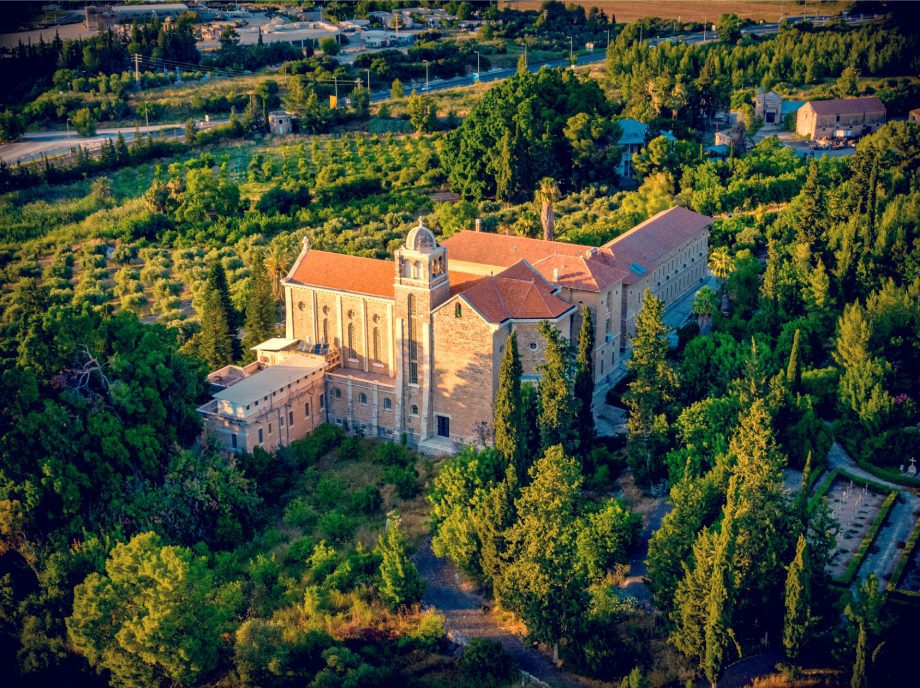The history of Latrun Abbey (Also known as Latrun Trappist Monastery) starts In 1879, and according to another source in 1875. Then Carmelite nuns purchased agricultural land from the Arab village of Imwas, located north of Latrun. At about the same time, in 1876–1877, two developers – Alexander Howard (originally named Alexander Awad) who was a Christian from the Maronite community whose family came from Malta and the local Emil Batat – established a hotel at the foot of Latrun Hill on which the remains of the Crusader Latrun Fortress are located.
The hotel was called the “Maccabee Hotel”, and served the caravans of pilgrims from Jaffa to Jerusalem, a journey that lasted for those two days. In 1892, the railway line between Jaffa and Jerusalem was inaugurated, the number of carriage passengers decreased and the hotel was sold. The name of the Fortress of Latrun – “Le toron des de Chevaliers” (The Tower of the Knights) – has been distorted over the years to “Latrun”; And this led to the development of a Christian tradition, according to which Dismas, the “good thief” crucified next to Jesus (Latin “boni latronis”), was born in the place.
In 1887, a Trapist monk arrived in Israel, with the aim of establishing a monastery in Latrun. So the monk, Louis Villa, purchased the hotel and lived there alone. The decision to establish the monastery in this area was made due to its proximity to Emmaus Nicopolis, an ancient Roman-Byzantine city located in the Latrun ridge, which the Christian tradition identifies as one of the places where Jesus was revealed to two of his disciples after his resurrection.
More About Latrun Monastery
The old monastery complex was built between 1891 and 1897. In 1909 it was given the status of a priory and that of an abbey in 1937. The community was expelled by the Ottoman Turks between 1914–1918 and the buildings pillaged, a new monastery being built during the next three decades. The monks established a vineyard using knowledge gained in France and advice from an expert in the employ of Baron Edmond James de Rothschild from the Carmel-Mizrahi Winery. Today they produce a wide variety of wines that are sold in the Abbey shop and elsewhere. The monastery is not far from Jerusalem so if you touring the area or on your way to the holy city it could be a nice stop.









